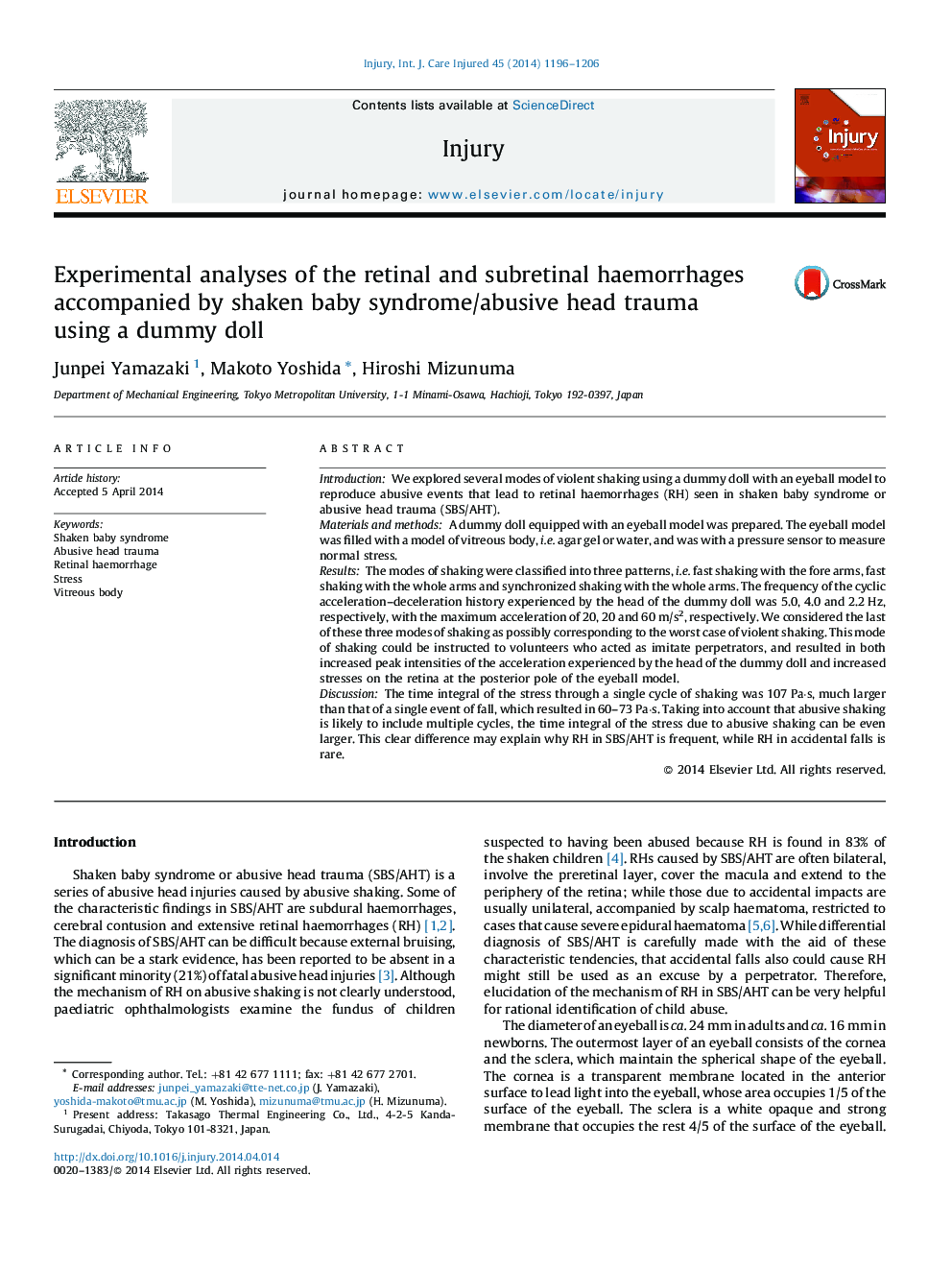| کد مقاله | کد نشریه | سال انتشار | مقاله انگلیسی | نسخه تمام متن |
|---|---|---|---|---|
| 3239541 | 1206009 | 2014 | 11 صفحه PDF | دانلود رایگان |
IntroductionWe explored several modes of violent shaking using a dummy doll with an eyeball model to reproduce abusive events that lead to retinal haemorrhages (RH) seen in shaken baby syndrome or abusive head trauma (SBS/AHT).Materials and methodsA dummy doll equipped with an eyeball model was prepared. The eyeball model was filled with a model of vitreous body, i.e. agar gel or water, and was with a pressure sensor to measure normal stress.ResultsThe modes of shaking were classified into three patterns, i.e. fast shaking with the fore arms, fast shaking with the whole arms and synchronized shaking with the whole arms. The frequency of the cyclic acceleration–deceleration history experienced by the head of the dummy doll was 5.0, 4.0 and 2.2 Hz, respectively, with the maximum acceleration of 20, 20 and 60 m/s2, respectively. We considered the last of these three modes of shaking as possibly corresponding to the worst case of violent shaking. This mode of shaking could be instructed to volunteers who acted as imitate perpetrators, and resulted in both increased peak intensities of the acceleration experienced by the head of the dummy doll and increased stresses on the retina at the posterior pole of the eyeball model.DiscussionThe time integral of the stress through a single cycle of shaking was 107 Pa·s, much larger than that of a single event of fall, which resulted in 60–73 Pa·s. Taking into account that abusive shaking is likely to include multiple cycles, the time integral of the stress due to abusive shaking can be even larger. This clear difference may explain why RH in SBS/AHT is frequent, while RH in accidental falls is rare.
Journal: Injury - Volume 45, Issue 8, August 2014, Pages 1196–1206
